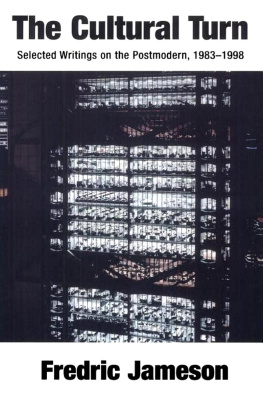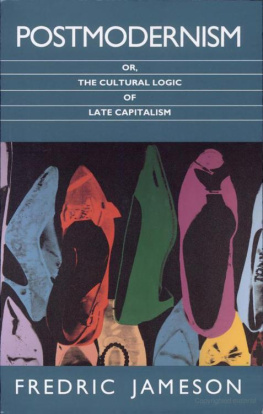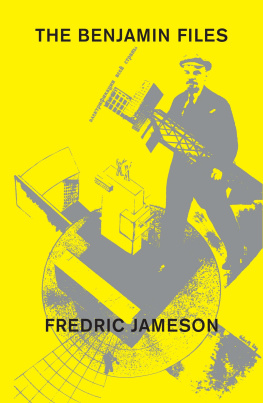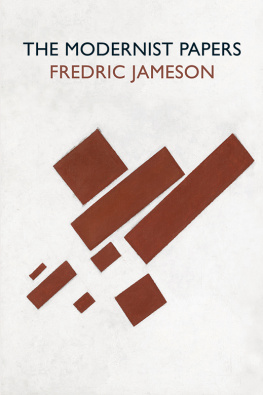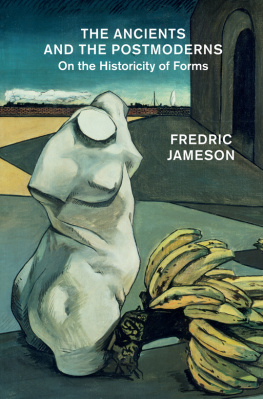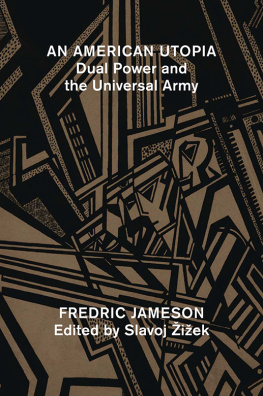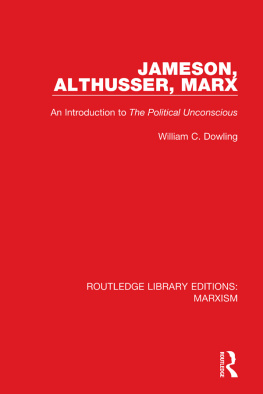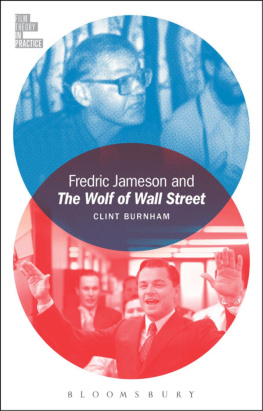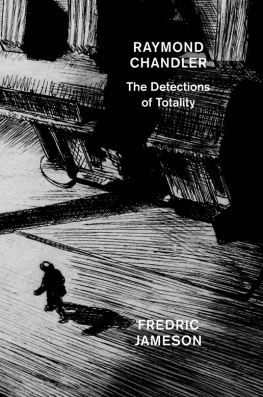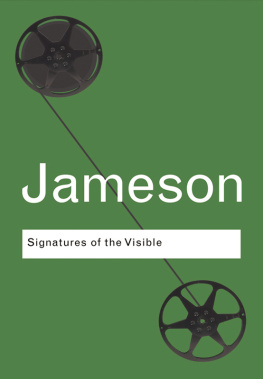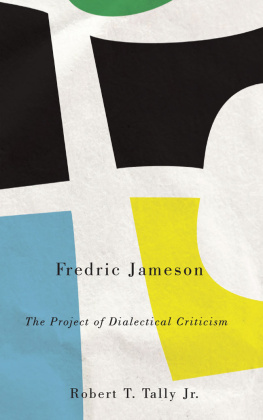TheCultural Turn
Selected Writings on thePostmodern 1983-1998
FREDRIC JAMESON
VERSO London New York
This collection firstpublished by Verso 1998 Fredric Jameson l998 All rights reserved
The right of FredricJameson to be identified as the author of this work has been asserted by him inaccordance with the Copyright, Designs and Patents Act 1988
Verso
UK: 6 Meard Street,London Wl V 3HR USA: 180 Varick Street, New York NY 10014-4606
Verso is the imprint ofNew Left Books
ISBN 1 85984 876 1 ISBN 185984 182 1 (pbk)
British LibraryCataloguing in Publication Data
A catalogue record forthis book is available from the British Library
Library of CongressCataloging-in-Publication Data
A catalog record for thisbook is available from the Library of Congress
Typeset by SetSystemsLtd, Saffron Walden Printed by R.R. Donnelley & Sons, Co.
For Masao Miyoshi
Contents
Acknowledgements ix
Foreword by PerryAnderson xi
1 Postmodernism and Consumer Society 1
2 Theories of the Postmodern 21
3 Marxism and Postmodernism 33
4 TheAntinomies of Postmodernity 50
5 Endof Art or End of History? 73
6 Transformations of the Image in Postmodernity 93
7 Culture and Finance Capital 136
8 TheBrick and the Balloon: Architecture, Idealism and Land Speculation 162
Notes 191
Index 201
Acknowledgements
Postmodernism and theConsumer Society was first published in Postmodernism and Its Discontents:Theories, Practices, ed. E. Ann Kaplan (London: Verso, 1988), and combineselements from Postmodernism and the Consumer Society, in TheAnti-Aesthetic, ed. Hal Foster (Port Townsend, WA: Bay Press, 1983) andPostmodernism: the Cultural Logic of Late Capitalism, New Left Review146 (July-August 1984).
Theories of thePostmodern was first published as The Politics of Theory: IdeologicalPositions in the Debate, New German Critique no. 53, Fall 1984.
Marxism andPostmodernism was first published in Postmodernism/Jameson/Critique,ed. Douglas Kellner (Washington DC: Maisonneuve Press, 1989) and in New LeftReview 176 (July-August 1989).
The Antinomies ofPostmodernity is an extract from The Seeds of Time (New York, NY:Columbia University Press, 1989).
The Brick and theBalloon: Architecture, Idealism and Land Speculation is the text of a talkdelivered at the seventh annual ANY conference in Rotterdam, June 1997, and isreprinted with permission of the organizers; it was also published in ANYHOW,ed. Cynthia Davidson (Cambridge, Mass.: MIT Press, 1998) and in New LeftReview 228 (March-April 1998).
Foreword
Exploding like so manymagnesium flares in a night sky, Fredric Jamesons writings have lit up theshrouded landscape of the postmodern, suddenly transforming its shadows andobscurities into an eerie, refulgent tableau. The contours of the sceneryrevealed are on display below. The Cultural Turn offers the most compactand complete resume of the development of his thinking on- the subject, acrosstwo decades of intensely productive reflections, from his earliest sorties tohis latest assessments. At once introduction and overview, it offers the bestscroll of Jamesons work on the postmodern to date.
The relation of this workto the prior history of ideas of the postmodern - a complicated story ofanticipations, displacements and inversions, that can at times look arbitraryor enigmatic, yet possesses its own underlying logic - forms a striking topicin its own right. Whatany such genealogy makes clear, however, is the unique position occupied byJameson in the field. No other writer has produced as searching orcomprehensive a theory of the cultural, socio-economic and geo-politicaldimensions of the postmodern. The log-book of its development lies open below.
The volume opens withthree foundational texts from the eighties. Postmodernism and ConsumerSociety, originally delivered as an address to the Whitney Museum of Contemporary Arts inthe fall of 1982, and subsequently expanded into a famous essay for New LeftReview in 1984, sets out the core theses of Jamesons theory of the passingof modernism and arrival of a new postmodern configuration, as transcriptionsof the cultural logic of late capitalism. This original intervention hasremained the cornerstone of all the work by Jameson that has followed.Virtually concurrent with it (actually written a few months earlier, in thespring of 1982, and published in New German Critique in 1983), Theoriesof the Postmodern supplies a crisp map of the various stances - intellectualand political - adopted towards postmodernism up to the time of Jamesons ownentry into the field, in the form of a combinatory of possible positions. HereJameson makes clear the distinctive standpoint from which he has consistentlywritten: a Marxism eschewing any facile moralism for a sober materialistanalysis of the historical ground of major cultural transformations. This wasan outlook that has disconcerted many readers on the Left. The third essaybelow, Marxism and Postmodernism, composed in early 1989, is Jamesons calmreply to such critics, setting his own project within the classic enterprisesof the Marxist tradition.
All these texts werewritten in the era of Reagan, whose Presidency they effectively span. This wasa time of prolonged speculative boom, on the back of massive rearmament for thestruggle against Communism, and a vast redistribution of income towards therich in the United States and more generally the West. The domestic euphoria ofthese years forms the immediate backdrop for Jamesons diagnosis of the logicof postmodern context'abruptly altered. With the collapse of the Soviet bloc, theglobal triumph of capitalism was widely proclaimed, as henceforward the necessarypattern of all economic and political life. In its most ambitiousinterpretation, the elimination of any alternatives was read as a definitiveterminus: in a categorical, if not chronological sense, nothing less than theend of history itself. It was to the paradoxes of this new meaning ofpostmodernity, as the cancellation of time and Gleichschaltung of space,that Jameson addressed himself in the fourth text included here.
The Antinomies ofPostmodernity, originally delivered as a Wellek Library Lecture in 1991, waspublished in expanded form as the first chapter of The Seeds of Time in1994. It is a tour de force of formidable power.
The final texts below area quartet of hitherto unpublished essays, that mark a critical new phase inJamesons writing. End of Art or End of History?, which dates from 1994,is a complex reflection on two Hegelian themes that have gained renewedcurrency today. It offers both a trenchant analysis of the conservative tropesat work in this revival, and an ingeniously radical reinterpretation of them -in which Francis Fukuyamas famous claim emerges in an unexpected light. Theuncompromising note struck here is carried through in the next essay,Transformations of the Image in Postmodernity, first presented to aconference in Venezuela in 1995, which starts by registering a sort ofregression within the evolution of postmodernism itself, to intellectual oraesthetic positions once cast aside. Jameson then proceeds to one particularsuch parabola, in the metamorphoses of the look as it was successivelyunderstood by Sartre and Fanon, Foucault and Robbe-Grillet, and finally GuyDebord - whose theory of the spectacle ushers us into a contemporary worldwhere modernist attachment to the sublime has receded before a renewed cult ofthe beautiful that, in Jamesons view, can now only be meretricious.
The last two essays forma natural pair. Jamesons writing on postmodern culture has always been closelyinformed by a sense of the economic transformations accompanying and shapingit. His original theorization of postmodernism was stimulated by ErnestMandels classic study of
Next page
